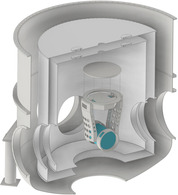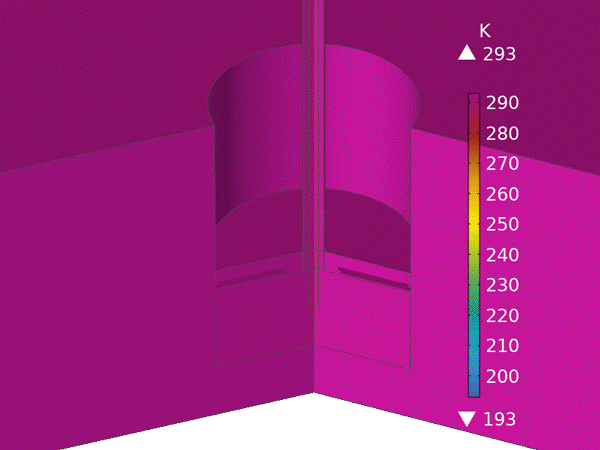Lennard Busch
- Research Associate
- Room: 109
- Phone: 42730
- lennard busch ∂does-not-exist.kit edu
Institute of Technical Thermodynamics and Refrigeration
Refrigeration and Cryogenics (TTK-KKT)
Bldg. 40.31
Engler-Bunte-Ring 21
76131 Karlsruhe

He-II Cooling for the Einstein Telescope (ET) and ETpathfinder
- Funding:
German Federal Ministry of Education and Research
- Startdate:
September 1, 2020
The Brownian motion of atoms and molecules in the mirrors and their suspensions limits the achievable sensitivity with current generations of laser-interferometric gravitational wave (GW) detectors. To overcome this Brownian noise, future GW detectors, like the Einstein Telescope will operate with cryogenic mirrors, cooled to about 10 K. However, the cooling of the mirrors needs to be performed in an ultra-quiet manner in order not to induce extra noise into the system. In ET, the mirror stability needs to be ensured to a level of about 1×10−20m/Hz0.5 in the detection band.
In this project, we are exploring the (in our opinion) ideal cooling approach for this application, making use of superfluid 4He (He-II) that is produced by pumping on a normal 4He (He-I) bath. The cooling power is a design parameter without intrinsic limits. The second order phase transition from liquid He-I to superfluid He-II can be described by Bose-Einstein condensation, whereby 4He atoms successively condense into their ground state. This means that any thermal noise is switched off in the condensed phase. The superfluid He-II is a quantum fluid with an extremely large thermal conductivity, many orders of magnitude beyond that of solids. It conducts heat fluxes with close-to-zero gradients, which prevents any bubble formation in the liquid that might otherwise cause microphony. It is the most stable form of cooling known, which is the reason for cooling e.g. NMR magnets with this technology. KIT has decades of expertise from its cooperation with the leading company in this field.
Because of the monetary value of helium, He-II systems are generally operated in closed loops as part of helium re-frigerators. The project will therefore investigate the concept, where the cooling requirements of ET, including the thermal shielding, the cool-down power and the detector cooling, is provided by three helium refrigerators, i.e. one at each detector station. Compared to a multitude of peripheral cryocoolers, this concept might yield benefits in terms of cost, operation and maintenance, in addition to the unmatched detector cooling per-formance. The extreme heat conductivity of He-II allows a design based on meter-long thin capillary tubes to extract the heat from the mirrors, while keeping the evaporating surface of the helium bath far away from any quiet parts of the mirror suspensions.
The results of this project will be an important input to the Technical Design Report (TDR) of the ET.

Exemplary CFD simulation results from the project. The animation shows the temperature profile evolution during the first 16 hours of cooldown of the Marionette suspending one of the Einstein Telescope's vital cryogenic mirrors. The solid body, weighing approximately 200 kg, is cooled by means of a supercritical flow of helium at low temperature through a double-walled tube. The cold helium is supplied via the inner tube and returned via the outer shell, extracting heat from the Marionette by forced convection in the interface volume.
